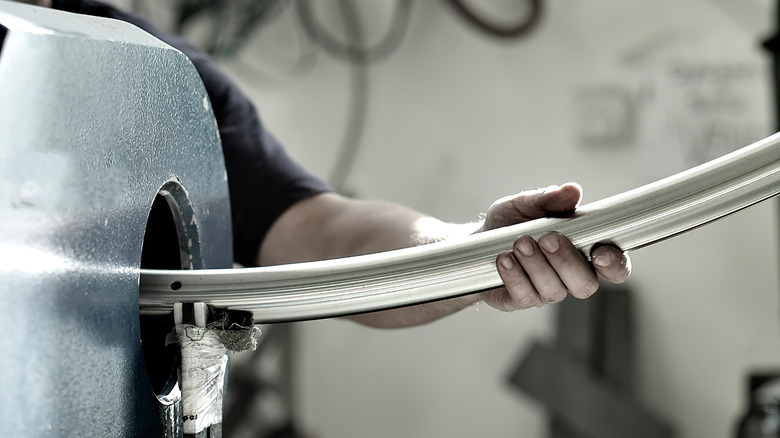How To Calculate Microstrain
Figuring out how much weight a bridge can hold depends on how it responds to the stress and strain of cars and other vehicles that cross it. But, for the most miniscule changes in stress, you'd need a strain gauge that can give you values of stress that are much smaller. The microstrain value helps you with that.
Microstrain
Stress is measured using sigma σ for the force F on an object and the area A over which the force is applied, as given with the equation σ = F/A. You can measure the stress in this straightforward manner if you know force and area. This gives strain the same units as pressure. This means you can add pressure onto an object as one way of measuring the stress on it.
You can also figure out how much strain is on a material using the value of strain, measured by epsilon ε for the change in length ΔL of a material when under stress divided by the actual length L of the material (in other words, ε = ΔL/L). When a material is compressed in a certain direction, such as the weight of cars on a bridge, the material itself can expand in the directions perpendicular to the weight. This response of stretching or compressing, known as the Poisson effect, lets you calculate the strain.
This "deformation" of the material occurs on a micro-level for microstrain effects. While normal-sized strain gauges measure changes in length of material on the order of a millimeter or inch, microstrain gauges are used for lengths of micrometers (using the Greek letter "mu" and shortened to μm) for the change in length. This would mean you would use values of ε on the order of 10^-6 in magnitude to get microstrain με. Converting microstrain to strain means multiplying the value of microstrain by 10^-6.
Microstrain gauges
Ever since Scottish chemist Lord Kelvin discovered that metallic conducting material under mechanical strain shows a change in electrical resistance, scientists and engineers have explored this relationship between strain and electricity to take advantage of these effects. Electrical resistance measures a wire's resistance to the flow of electric charge.
Strain gauges use a zigzig shape of wire such that, when you measure the electrical resistance in the wire as a current flows through it, you can measure how much strain is put on the wire. The zigzag, grid-like shape increases the surface area of the wire parallel to the direction of the strain.
Microstrain gauges do the same thing, but they measure even more miniscule changes in electrical resistance to the object such as microscope changes in an object's length. Strain gauges take advantage of the relationship such that, when the strain on an object is transferred to the strain gauge, the gauge changes its electrical resistance in proportion to the strain. Strain gauges find uses in balances that give precise measurements of an object's weight.
Strain gauge example problems
Strain gauge example problems can illustrate these effects. If a strain gauge measures a microstrain of 5με for a material 1 millimeters in length, by how many micrometers does the length of the material change?
Convert the microstrain to strain by multiplying it by 10-6 to get a strain value of 5 x 10-6, and convert 1 millimeters to meters by multiplying it by 10-3 to get 10-3 meters. Use the equation for strain to solve for ΔL: 5 x 10^-6 = ΔL/10^-3. Thus, ΔL = 5 x 10^-6 x 10^-3 = 5 x 10^-9 meters, or 5 x 10-3 μm.
References
- Omega Engineering, Inc.: The Strain Gage
- Sensing Systems Corporation: Strain Gauge Technology in Field Testing
- OMEGA Engineering: Strain Gauge
- National Instruments: Measuring Strain with Strain Gages
